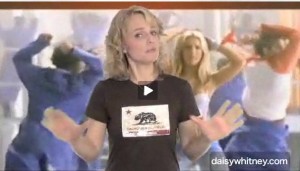What perfect timing. I watched this “New Media Minute” by Daisy Whitney, and was interrupted by a Product Director who’s seething over his clueless media buyers. My client, like me, is perplexed and annoyed by the inability of most media buyers to speak succinctly to brands about two simple things: whether the media spend is, simply, “on strategy” and “on budget.”
The details are noise, and we just want to be convinced the media-buying firm is not completely clueless. Like maybe they’re buying based on efficient and high-impact opportunities and not to payback for the dinner AOL bought. I mentioned that some media buyers are the people from high school that could have chosen careers selling cars or mortgages, and generally had C averages (but to be fair, they dressed well and always knew how to tap the keg). He recounted his friend who “was probably 400 in a class of 399” and is now quite wealthy in the media space.
I really shouldn’t poop on media buyers until I walk a mile in their Manolos.

But imagine how frustrating it is — to a marketer and video creator — to read eMarketer reports that online-video is projected to grow at a bullish 30-40% annually…. but knowing that it’s all in the hands of career buyers of print and television who like driving f’ing awareness & attitudes and CPMs and anything else you can’t connect to sales.
People, video has the great potential of driving awareness, but also trial... dare I call it a “direct response” medium that “traditional media buyers” misunderstand, fear, loathe? Media buyers are to “direct response” and sales what belly dancers are to FIFO. And even the Wall Street Journal (a publication you’ve not heard of because it requires a subscription) says snail mail is still hot.
(Oh- you’re not a “traditional media buyer” if you are reading this article, unless someone sent it to you to chastise you).
I find Daisy’s characterization of marketers and advertisers hoping to “buy not rent” audiences a bit quaint, even if it may well be accurate. How many of us wake up each morning curious to know what entertainment P&G or Kraft has cooked up for us? Seriously? Pepsi is apparently bagging the Superbowl and launching some online thing that may or may not be fabulous. It’s “the next great thing” or BudTV.com all over again. We can’t be sure, but I suspect we won’t bookmark it. It reminds me of pharmaceutical brand managers in 1999 aspiring to have their website as the “home page” of every physician. Fat chance, but sometimes time is the best teacher.
I do like the theme of marketers shifting from interruption ads to the creation of engaging content and entertainment. Yey for that! But we impatient and ADHD-driven online-video carnivores are not likely to find it without some help from PR and ad spending.
Fortunately we’re seeing some new “video” ad networks (Daisy names Yume and Scanscount) that might help media buyers go beyond prerolls. I wonder if these companies are sophisticated enough to monitor their names in social media. First company to comment below wins a free pixel.
Read this TechCrunch piece by WatchMojo’s CEO for some tips for content creators looking to snatch some of the massive online-video spending (the writer leads a company that does branded entertainment, which is about as pervasive these days as ad networks). According to WatchMojo: “Unlike articles, you can’t fool audiences as easily with videos. It’s easier to get away with a slapdash article than with a slapdash video.”
Well that’s news to me. I’ve been fooling audiences a few hundred million times.
So here are some tips for the ambitious media buyer who, at least, wants to sound smart when speaking with a brand:
- Acknowledge that online-video is growing, and that budget should follow the audience.
- Don’t spend it all on pre-rolls. We hate them as much as you.
- Find people who have already assembled an organic audience, and sponsor them or buy product placement. Go direct to the big ones (NextNewNetwork, Revision3) or use Hitviews, PlaceVine, Poptent or Zadby to broker deals with smaller guys. Did I miss any intermediary between popular web content and marketers? Don’t be afraid to raise your hand.
- Partner with content providers and online media players to create webisodes that are entertaining AND engaging (with an emphasis on the former, since the latter depends on it). You’ll need a “branded entertainment company,” but be sure they have an idea of how to get the crap seen not just make it fabulous.
- Buy the crap out of ad inventory that are driven by search (if they’re searching for your brand, you want to be there first).
- Customize your content because if I see another 30-second spot as a preroll I’m going to power puke.
- Use rich-media ads with compelling video content and an irresistible “call to play.”
- Buy every Nalts InVideo ad you can from YouTube regardless of the CPM. I heard his content attracts your target buyers, and that they’re 45% more likely to engage in your ad because his videos are so bad.
